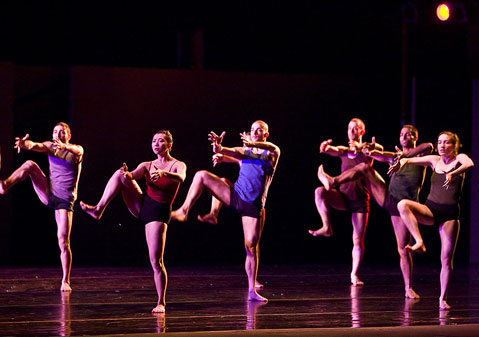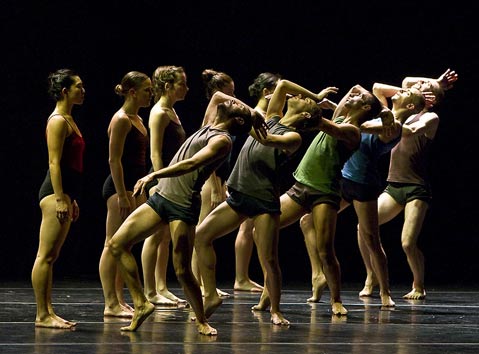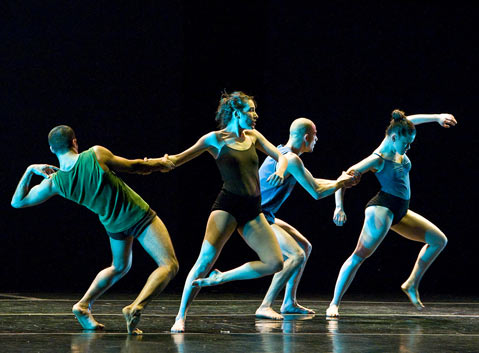A Review of Batsheva Dance Company at the Arlington Theatre
Israel's Premiere Contemporary Dance Company in S.B., Tuesday, February 24

In the beginning, there is stillness.
Five couples stand in silence, the men facing downstage, the women in deep plies with their backs to the audience. Then, as if they are parts of one coordinated body, the women drop to one knee in perfect unison.
In Ohad Naharin’s 60-minute, intermission-free Max, you often get the sense of a larger organism directing the 10 dancers. That sense may be due in part to the music-if you can call it that-a score composed of breath and electronic screeches, incoherent babbling, voices counting from one to 10 in a not-quite-familiar language, and plenty of silence. Against this changing aural backdrop, the dancers push toward a more universal language. They find it in the smallest gestures, like a slight lift of the chin or a jerk of the shoulder inward, but also sometimes in full-bodied thrashing.

They’re speaking in Naharin’s movement language, GAGA. This language is about finding the unsaid things and saying them, and whether the results are shocking, or embarrassing, or ugly, we recognize them as the things we think about saying, but don’t. Two women dart back and forth in conversation, their statements made in the aggressive swirling of hips, the quick spiral of spines unraveling. Facing off, they push their pelvises forward until they are pressed together, and peck at one another’s faces like angry birds.
Each blackout brings a change in tone, like a new day. The frenetic scene of 10 dancers moving in 10 different directions resolves into a tableau of 10 head-banging night clubbers, feet rooted in place, left hands raised in a “hang loose” salute.

And only when he has drawn his audience deep into this new world does Naharin make his loudest statements. First, it’s a series of mechanical pulses, and a single dancer moves to the beat, each motion driven by the rhythm. Then it’s another dancer and another, until the whole group moves as one to a pulsating chorus of pneumatic hisses and metallic shrieks.
Next comes the counting game, a male voice reciting an increasing number sequence over and over, the dancers giving it shape with movements that echo its structure. It’s relentless and it’s mesmerizing, as impossible to ignore as a wailing, cooing baby; it doesn’t matter that it’s not your language.
It also doesn’t matter what Naharin’s trying to say. Max is a mirror where we recognize our own impulses, where we see our humanness both beautiful and base, where some of us recoil in displeasure while others edge forward, listening to a half-forgotten language we used to speak.



